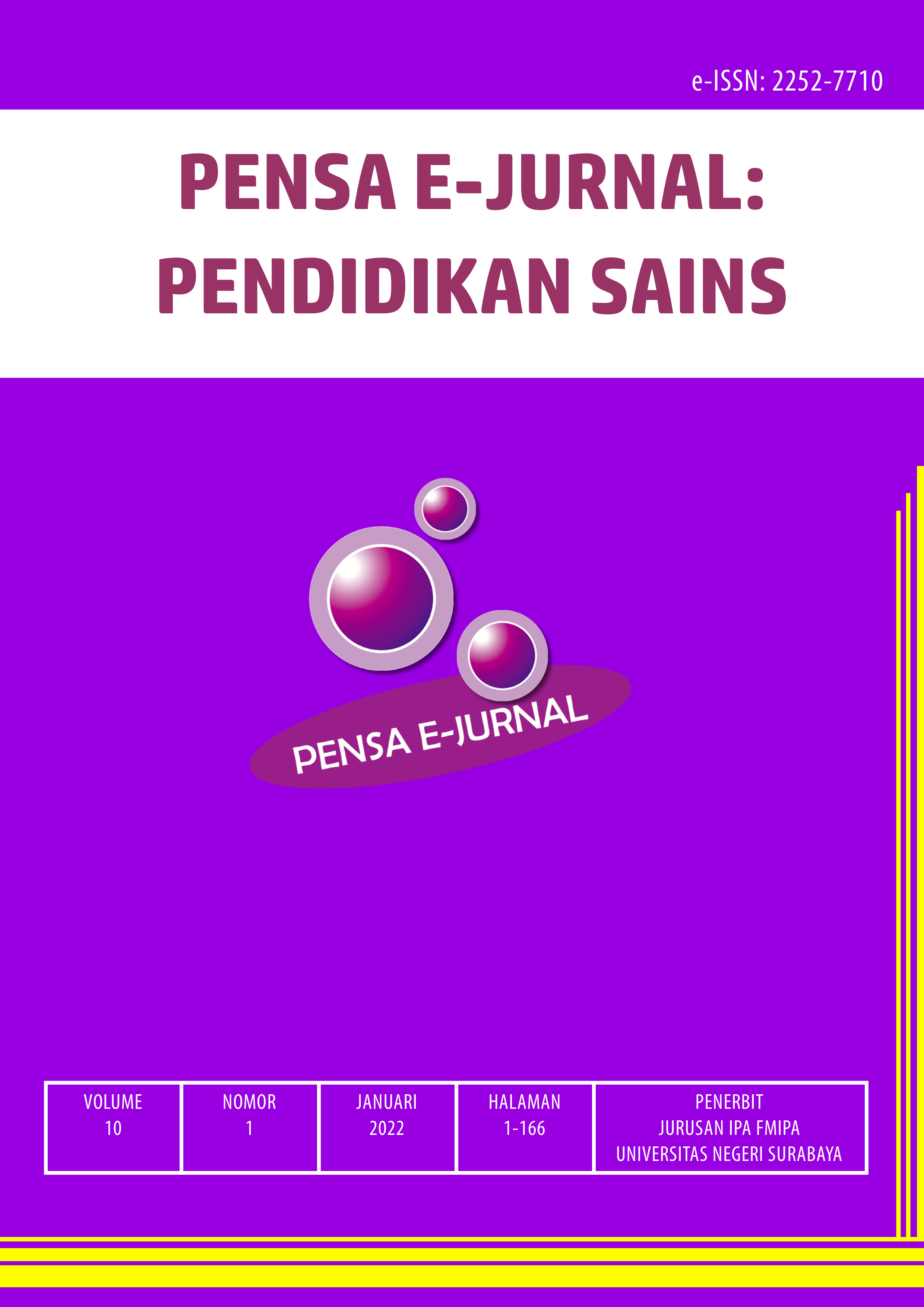ANALISIS KOMUNIKASI SAINS PESERTA DIDIK KELAS IX SMP YAYASAN PADA MASA PANDEMI COVID-19
DOI:
https://doi.org/10.26740/pensa.v10i1.42306Keywords:
science communication skill, COVID-19 pandemic, online learningAbstract
This study was conducted with the aim of analyzing the science communication skills of students in class IX Natural Science learning at Yayasan SMP during the COVID-19 pandemic. The research design used is descriptive qualitative. The subjects of this study were students of class IX SMP Yayasan Pandaan which consisted of twenty-five students. This research method uses a case study research method using research instruments in the form of questionnaires on Google Forms media. The data analysis technique used for this research is descriptive statistics. The results of this study indicate the average score in the less category. The conclusion of this research is that the science communication skills of class IX students during the COVID-19 pandemic are still lacking due to several factors, namely the teacher uses the WhatsApp application to explain the essence of the material, the teacher does not use Zoom, and the students are only given assignments which make students lazy, so that students' science communication has not been fully achieved.
Downloads
Downloads
Published
How to Cite
Issue
Section
 Abstract views: 275
,
Abstract views: 275
, PDF Downloads: 517
PDF Downloads: 517

















